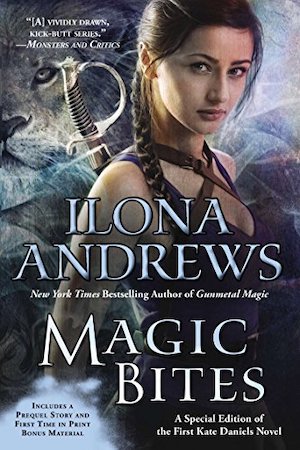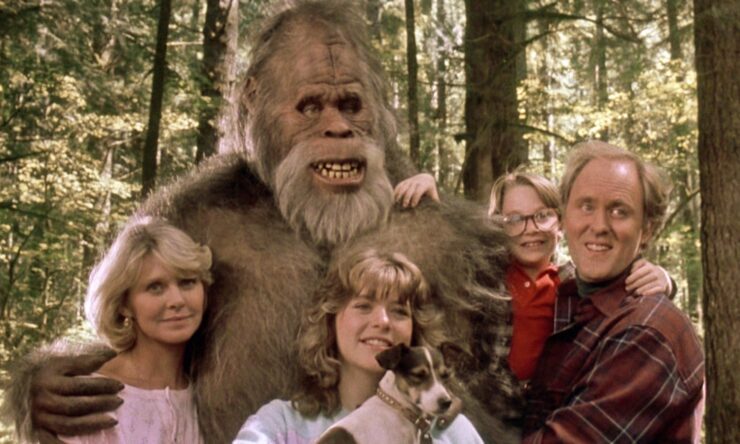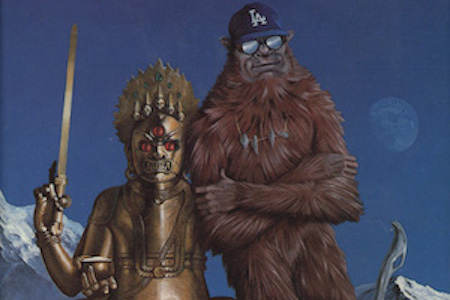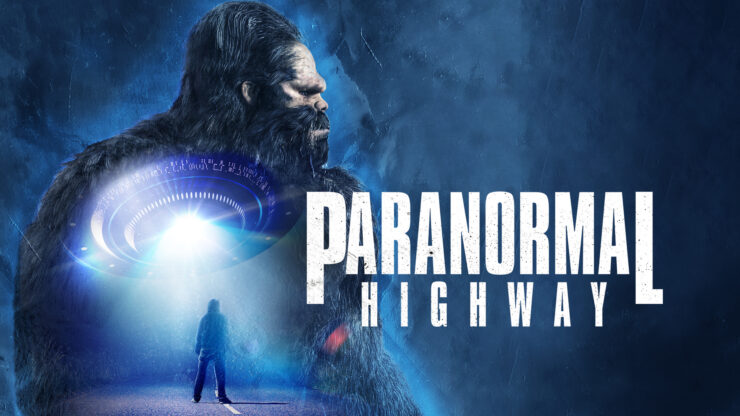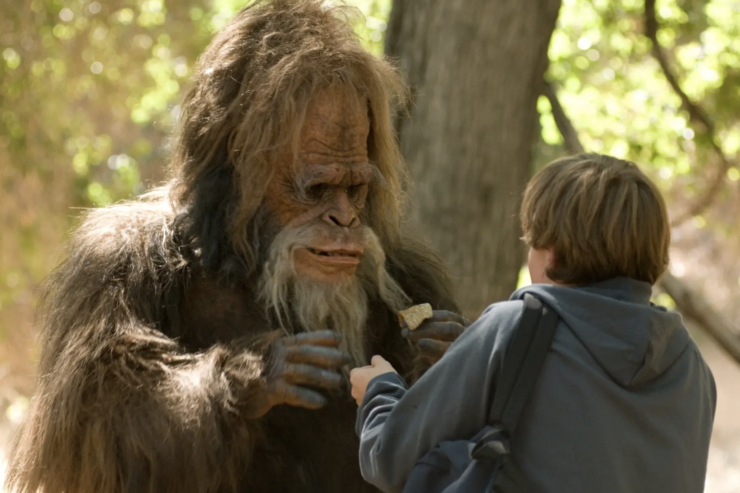Every so often a book comes along that I appreciate both as a reader—great plot, great setting and worldbuilding, great characters—but also as a writer and editor. Ilona Andrews’ Magic Bites, the first volume of the Kate Daniels series, is one of these. It’s an iconic urban fantasy, and it deserves that status.
Urban fantasy and crime novels have a lot of tropes in common. There’s a mystery to solve, often a murder. Setting is very important: it defines the tone of the series, and serves as backdrop and inspiration for the invidual novels’ plots. The protagonist is some form of cop or enforcer, and these days she’s often female. She’s tough, she has a uniquely ghastly history, and she has a tough name. Kate. Sarah. Mercy.
I lose track of all the Kates and Sarahs and Mercys. Wait, is this is the Kate with the K-9 partner, or the Kate with the werewolf partner? Are we in a world of hardboiled empirical science, or does magic work and our protagonist is a practitioner?
I won’t be forgetting this Kate at any time soon. She ticks the boxes: mysteriously and tragically deceased family, strong magical and physical fighting skills, quite a bit less strong social skills, smart mouth and few filters. She has connections all over her world, not all of them either legal or safe. She presents as a loner who has a big problem with authority, but she’s surrounded by friends and allies as well as enemies. She’s a chaos agent, a troublemaker, and an ultimate good guy.
What makes this series stand out for me is the depth and quality of its worldbuilding. The characters are traditional types, but they’re believable people—even the most outré magical beings have more than one dimension to them. They do their best to survive in a particularly horrific postapocalyptic wasteland: Atlanta in the midst of a catastrophic transformation from the mundane world we know to a world ruled by magic.
Magic and tech succeed one another in progressively shorter and more devastating waves. When the tech is up, machines work, electric lights come on, magical beings lose their power. When the magic is up, everything changes. High-rises crumble and fall. Parks turn into sorcerous woods. Weird and terrifying things populate the night.
People have found ways to live with the constant shifts in the way the world works. Cars, for example: regular gas-powered vehicles stop working when the magic is up, but clever mechanics have figured out other types of fuel and different ways to run an engine. Or else people resort to older modes of transport. Horses, mules, wagons. Feet.
I especially like the ley taxis. Traveling ley lines on foot can rip your feet off, but if you build a wooden raft and ride the line like a river, you can get up to ninety miles an hour before the tech comes back up and you’re stuck on mundane roads and waterways.
(Andrews knows equines, by the way. They have names and personalities, and if they’re pushed hard and far, they get tired. Big props for doing equines right.)
But I’m here to talk about shapeshifters, and Andrews’ world is full of them. There’s even one who can transform into any shape, size, or gender of human, though they (he, Kate thinks of him, even when he’s not presenting as male—this was a few years ago, before we got used to shades of pronouns) can’t transform into any other animal. Kate’s friend Jim is a were-jaguar. The Pack to which he belongs consists of a wide variety of animal shifters, from rats to the huge enforcer, the Kodiak of Atlanta. The King of Beasts, aptly enough, is a lion shifter. And yes, there’s a teenaged werewolf.
Andrews’ worldbuilding here is as meticulous as it is everywhere else. (Andrews, I will note, is a pseudonym; it’s two writers working as a team. And a most excellent team it is.) Shifters can be born to the offspring of shifters, or they can be first-generation—infected with the virus that causes transformation. They can be human to animal. They can also be animal to human, sometimes called “beastkin.” Those are very much not the done thing; they may be killed at birth.
Shifters can take three forms. Full human, full animal, and a monstrous intermediate form which is difficult to maintain. A beast-man who can speak in that form is exceptional. It’s a sign of extraordinary self-control.
Control is everything to a shifter. A shifter who has not mastered it becomes a loup, a creature of raw predatory hunger. All it exists to do is hunt, breed, kill, and eat. When it’s bred and/or killed everything around it, it turns on itself.
That’s your classic werewolf (or any other animal) curse. The antidote to it is the Pack. Pack code regulates everything its members do according to a rigid hierarchy and a set of inviolable rules. Those rules keep Pack members from turning loup, by teaching them to control their instincts.
Buy the Book
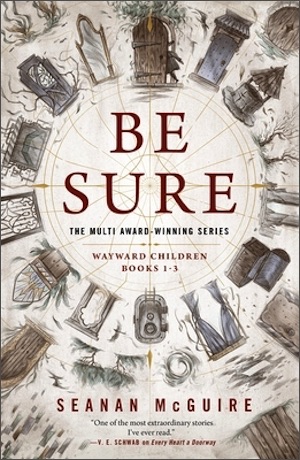

Be Sure
It doesn’t always work. A Pack member can still go rogue. But it keeps most of them alive and allows them function in society.
Kate Daniels is not a shifter. She’s something else, which is revealed as the series progresses. In the first volume, what we know is that she is a strong practitioner of magic. She’s refused to join the Order, which is sort of like the Knights Templar and sort of like the Men of Letters, but she was fostered by one of its members and trained by it in magic and in martial arts. She belongs to the mercenaries’ Guild and serves as magic-for-hire. She carries an enchanted saber; she knows her way around a spellbook.
Besides the Order and the Pack, there are the People. They’re necromancers, and they control one of the creepiest manifestations of vampires that I’ve seen in the genre. I’d actually include them in the Bestiary, and not as bat shifters. They’re undead and essentially immortal, but they’ve lost all their humanity and much of their human form. They’re devoid of consciousness. The People control them, use them as servants and couriers. If they escape that control, like the loup, they succumb to pure and mindless lust for blood.
Everything, really, is about control. The world is losing it at a rapidly escalating pace. The various organized groups of humans and magical beings fight an ongoing battle to preserve what order they can. They can’t control or reliably predict the waves of magic and tech, but they try hard to hold space and protect their own.
Kate skates along the edges of these different and often conflicting forces. She ends up working for the Order, but not quite as one of them—more as a consultant. She both uses and is used by the People. She allies herself with the Pack, not exactly willingly or happily, but they keep being thrown together.Whether they like it or not, they have a surprising amount in common.
Kate is a fine example of the loner who finds herself a chosen family. It’s not what she might have thought she’d choose, but it accretes around her. In her way she’s a catalyst, a connector: a force that brings together the disparate forces of the world.
She makes a lot of trouble, but most of it is in a good cause. Fighting evil. Protecting innocents. Making the world better. Mostly. One way or another.
Judith Tarr is a lifelong horse person. She supports her habit by writing works of fantasy and science fiction as well as historical novels, many of which have been published as ebooks. She’s written a primer for writers who want to write about horses: Writing Horses: The Fine Art of Getting It Right. She lives near Tucson, Arizona with a herd of Lipizzans, a clowder of cats, and a blue-eyed dog.










